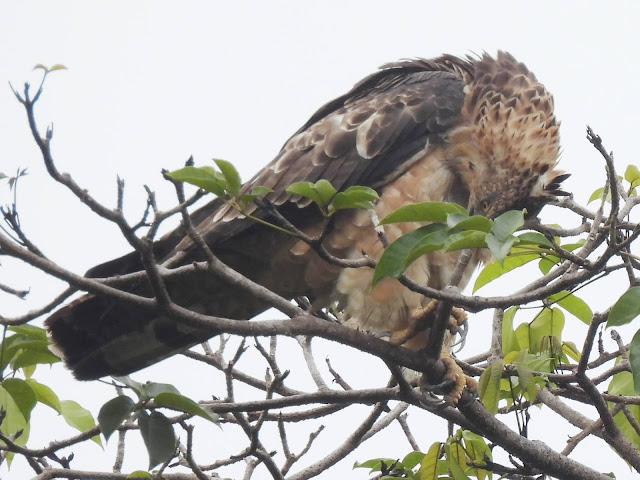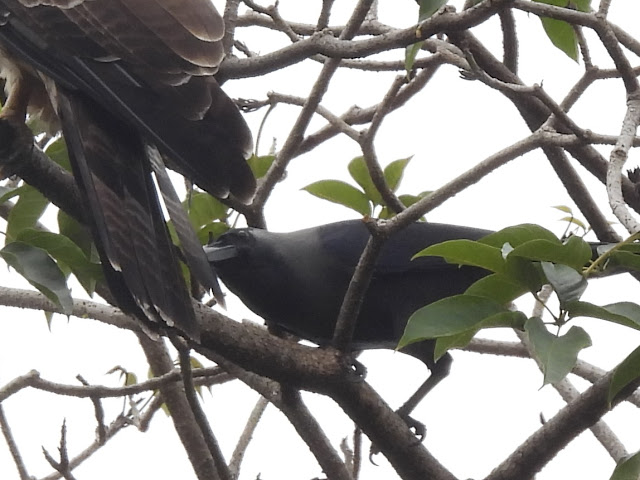Oriental Honey-buzzard
Oriental Honey-buzzard / Helang Lebah / Pernis ptilorhynchus
As both its Malay and English names indicate,
this bird has a specialist diet. When it
can, it plunders bee and wasp nests. Honey
buzzards will follow bees (or wasps) back to their nest. Once a nest is found it is broken open and the larvae are eaten; not the honey. Accordingly,
the Malay name, Helang Lebah (‘bee eagle’) is more accurate. If bees are unavailable it will also eat
small mammals, nestling birds, worms, and- more unusually- fruit and berries.
This bird was preening its feathers before looking in my direction.
Another inaccuracy of the English name is that the honey-buzzard is not a buzzard. Buzzards, properly, are broad-winged hawks of the genus Buteo, whereas the Honey-buzzard is in a different genus, Pernis. The confusion is understandable, however. Young of the European Honey-buzzard (Pernis apivorus) look like the Common Buzzard, Buteo buteo and young of the Oriental Honey-buzzard look like hawk-eagles in the genus Nisaetus.
Would the crest (not always visible) make a large raptor think this bird is a much stronger hawk eagle?
Mimicry is a common feature of biology. To avoid being eaten, non-venomous snakes
mimic venomous snakes and non-toxic butterflies mimic toxic species. The same sort of thing is likely the case
with honey-buzzards. They are weaklings
of the raptor world; juveniles can easily be killed by goshawks. By mimicking a stronger raptor they are less likely
to become prey.
One bold House Crow, in a mob of three. The crows eventually succeed in forcing this honey-buzzard to leave their territory.





Comments
Post a Comment